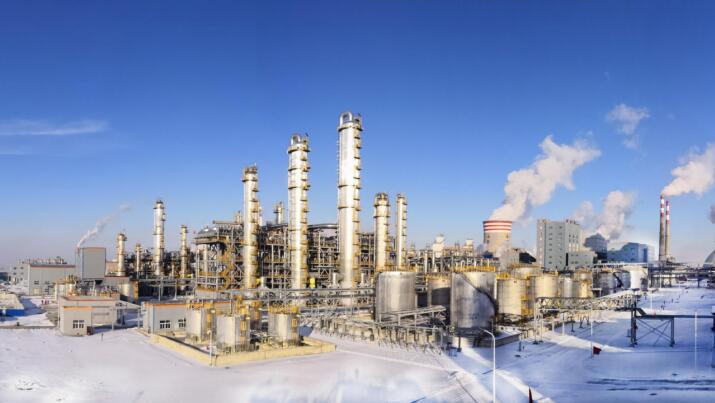Liquid ring vacuum pump is used for ethylene glycol vapour in falling film vacuum evaporation
Ethylene glycol also be called EG, which is a colorless, odorless, sweet liquid that is toxic to animals.

Ethylene glycol is mainly used in the manufacture of polyester, so its industry belongs to a part of the polyester industry chain, and ethylene glycol mainly belongs to the upstream petrochemical industry of the polyester industry chain.Of course, with the development of coal chemical industry, coal-to-ethylene glycol has also entered the polyester market. According to incomplete statistics, in China, the proportion of coal-to-ethylene glycol in the polyester industry is currently 25-30%.The polyester industry is mainly fiber and bottle flakes, and the terminal application fields are mainly textile, clothing, beverage and sheet materials, which are closely related to the basic needs of clothing, food, housing and transportation.So the demand for ethylene glycol is relatively stable.
Geographically, as of 2016, the world’s major ethylene glycol production capacity is also concentrated in Asia, the Middle East and North America, of which Asia accounts for 18.557 million tons, accounting for 50%, North America 4.98 million tons, accounting for 13%, and the Middle East 10.86 million tons, accounting for 29%.

As for the vacuum treatment of ethylene glycol, the common method is through falling film vacuum evaporation. Falling film evaporation is to add the material liquid from the upper tube box of the falling film evaporator heating chamber, and evenly distribute it to each heat exchange tube through liquid distribution and film forming device. Under gravity, vacuum induction and air flow, it flows from top to bottom in a uniform film shape.In the process of flow, it is heated and vaporized by the shell side heating medium, and the steam generated and the liquid phase enter the separation chamber of the evaporator together. After full separation of the vapor and liquid, the steam enters the condenser for condensation (single-effect operation) or enters the next effect evaporator as the heating medium, so as to realize multi-effect operation, and the liquid phase is discharged from the separation chamber.
The material liquid of the falling-film evaporator is added from the top of the evaporator, and falls along the wall of the tube in a film shape under the action of gravity. In this process, it evaporates and becomes thickened, and the concentrated liquid is obtained at the bottom.Falling film evaporator can evaporate materials with higher concentration and higher viscosity.The heat transfer coefficient is higher because the solution flows in a membrane in the one-way evaporator.Short residence time, not easy to cause material deterioration, suitable for processing heat-sensitive materials.The liquid retention is small, and the falling-film evaporator can operate quickly according to the change of energy supply, vacuum degree, feed amount, concentration and so on.Near constant, because the process fluid flows only under the action of gravity, and is not driven by the high temperature difference, low temperature difference evaporation can be used.Falling film evaporator is suitable for evaporation and concentration, foam materials due to the material liquid into membrane evaporation in the heating tube, which form the gas-liquid separation, in effect at the bottom of the body at the same time, most of the material liquid is siphoned off, only a little part of material liquid and all secondary steam enters the separator separation, the whole process of material liquid forming no too big impact, to avoid the formation of bubbles.

Because of this characteristic, falling film evaporator is widely used in the evaporation and concentration of water or organic solvent solution in medicine, food, chemical industry, light industry and other industries, and can be widely used in the treatment of waste liquid in the above industries.Especially suitable for heat-sensitive materials, the equipment in vacuum and low temperature conditions for continuous operation, with high evaporation capacity, energy saving and consumption reduction, low operating costs, and can ensure the material in the process of evaporation invariance.
EVP has a very good case in the ethylene glycol vapour falling film vacuum evaporation industry:
Capacity: 56 m3/min
Working Vacuum: 4KPa
Inlet temperature: 20C
Working liquid temperature: 15C
According to the parameters given by the customer, EVP selected a suitable liquid ring vacuum pump: 2BE1-303 matching with air jet pump, liquid ring pump ultimate vacuum is 3300pa, matching with air jet pump which has very good performance under the required working degree , at the same time considering the Ethylene glycol gas characteristic, adopt Burgmann mechanical seal to avoid gas leakage. Because the gas itself is not corrosive, ordinary materials can be satisfied.
Edited by: Shanghai EVP Vacuum Technology Co., ltd
(The article comes from the Internet. If reprinting is not allowed, please contact our company to delete it.)




